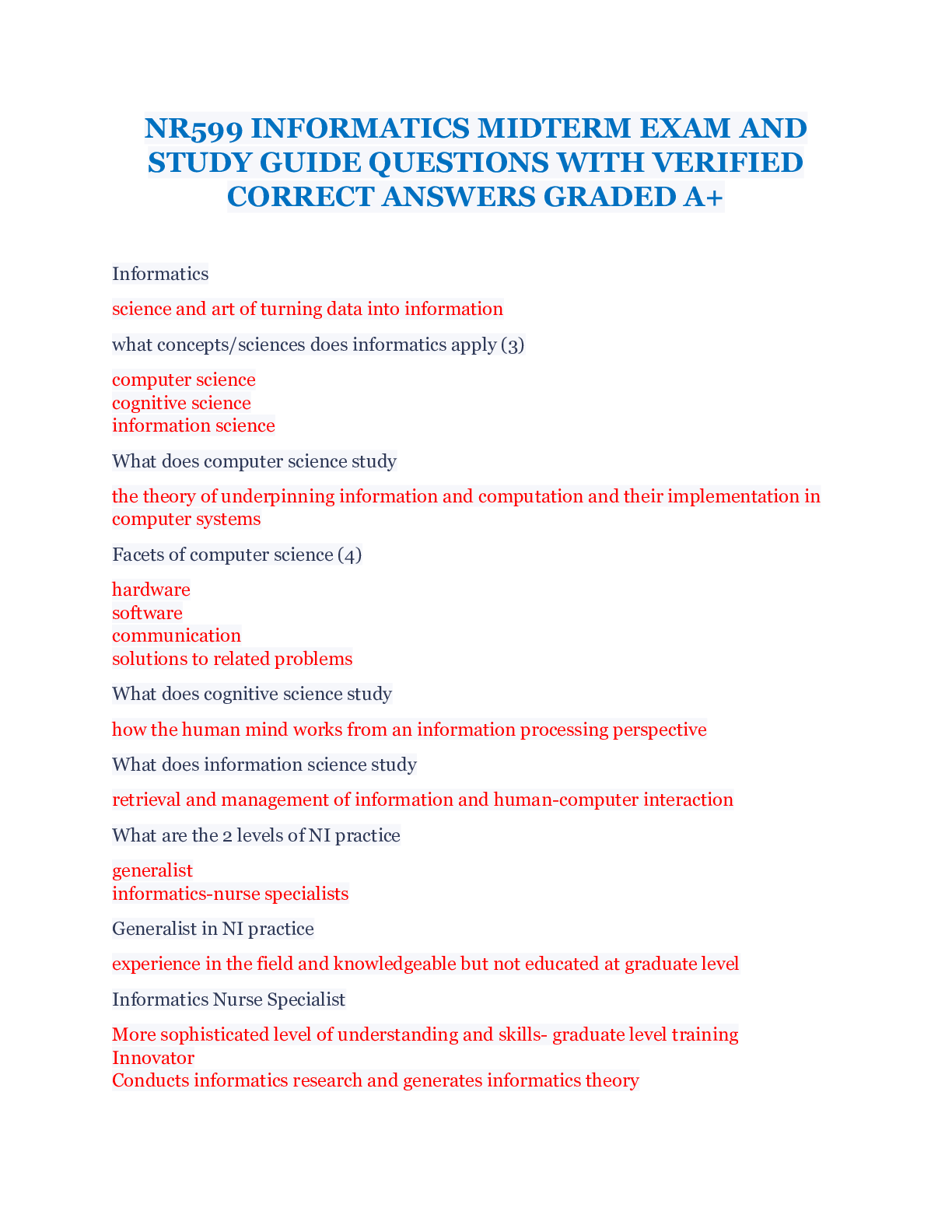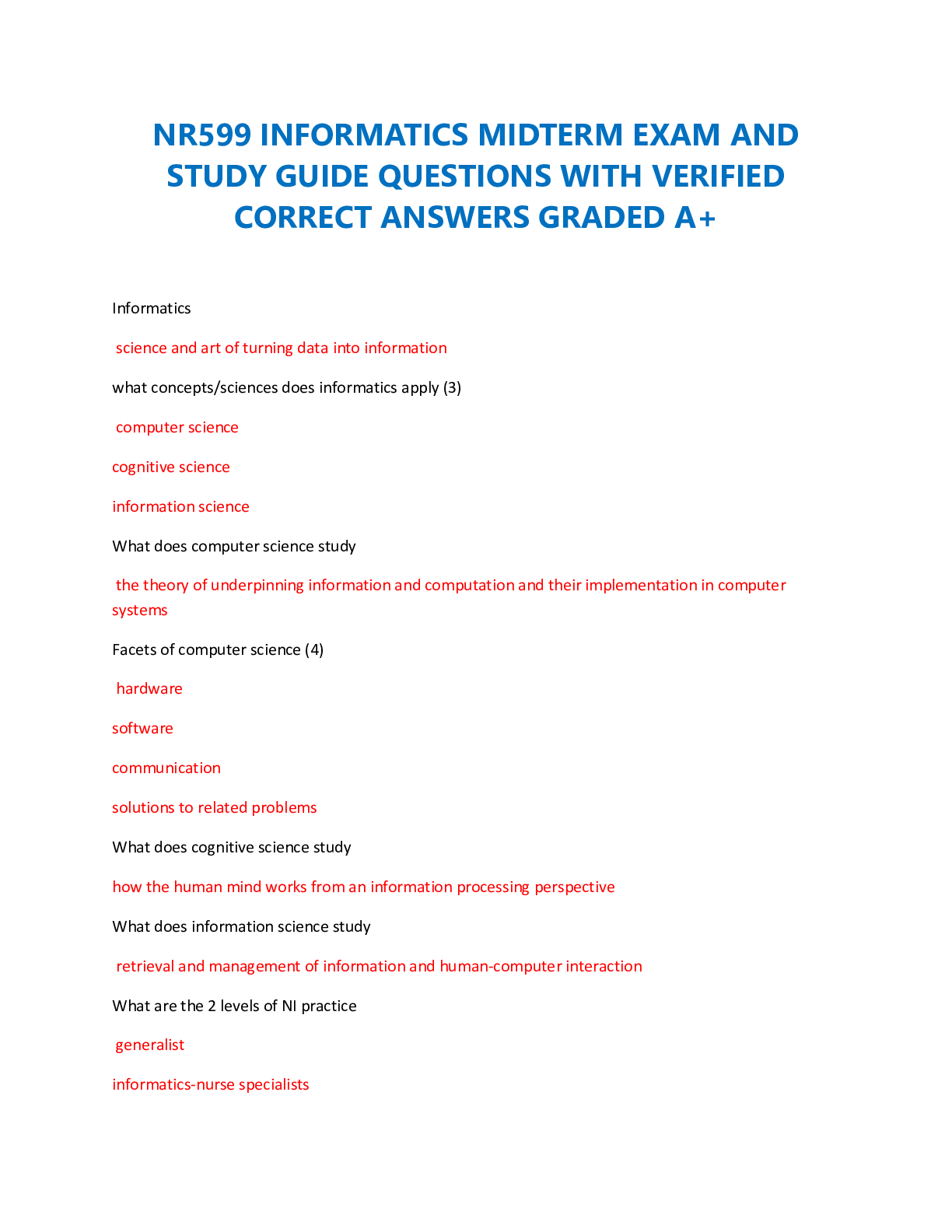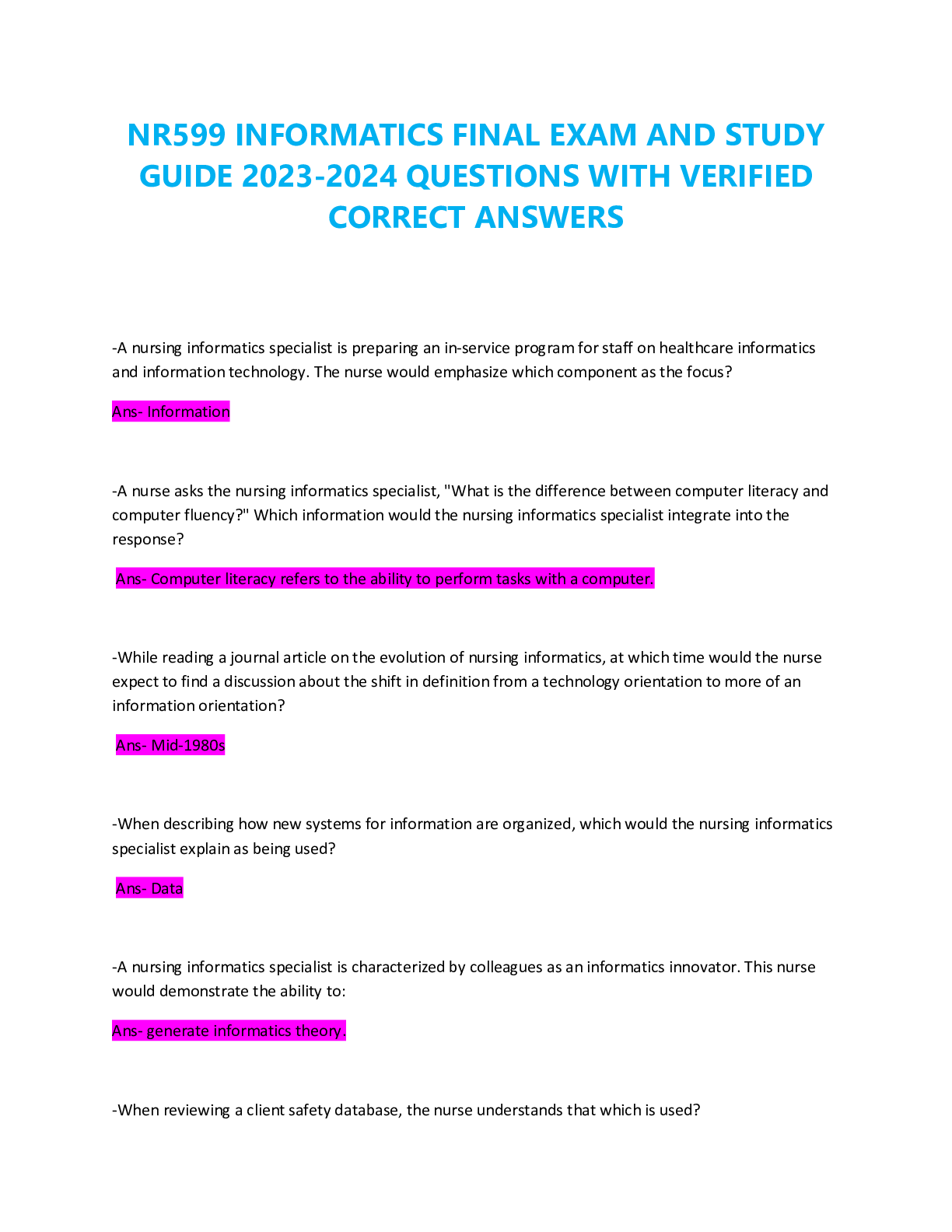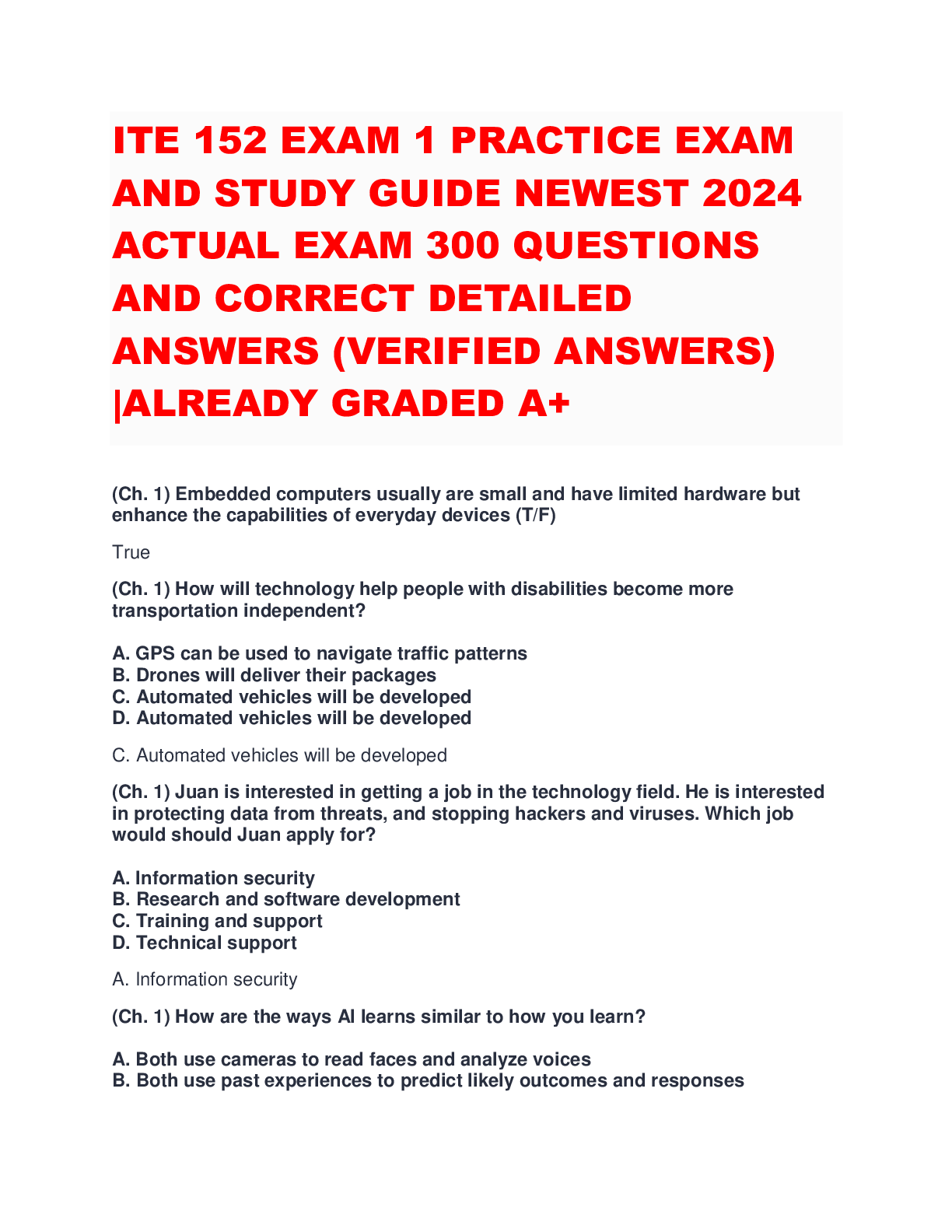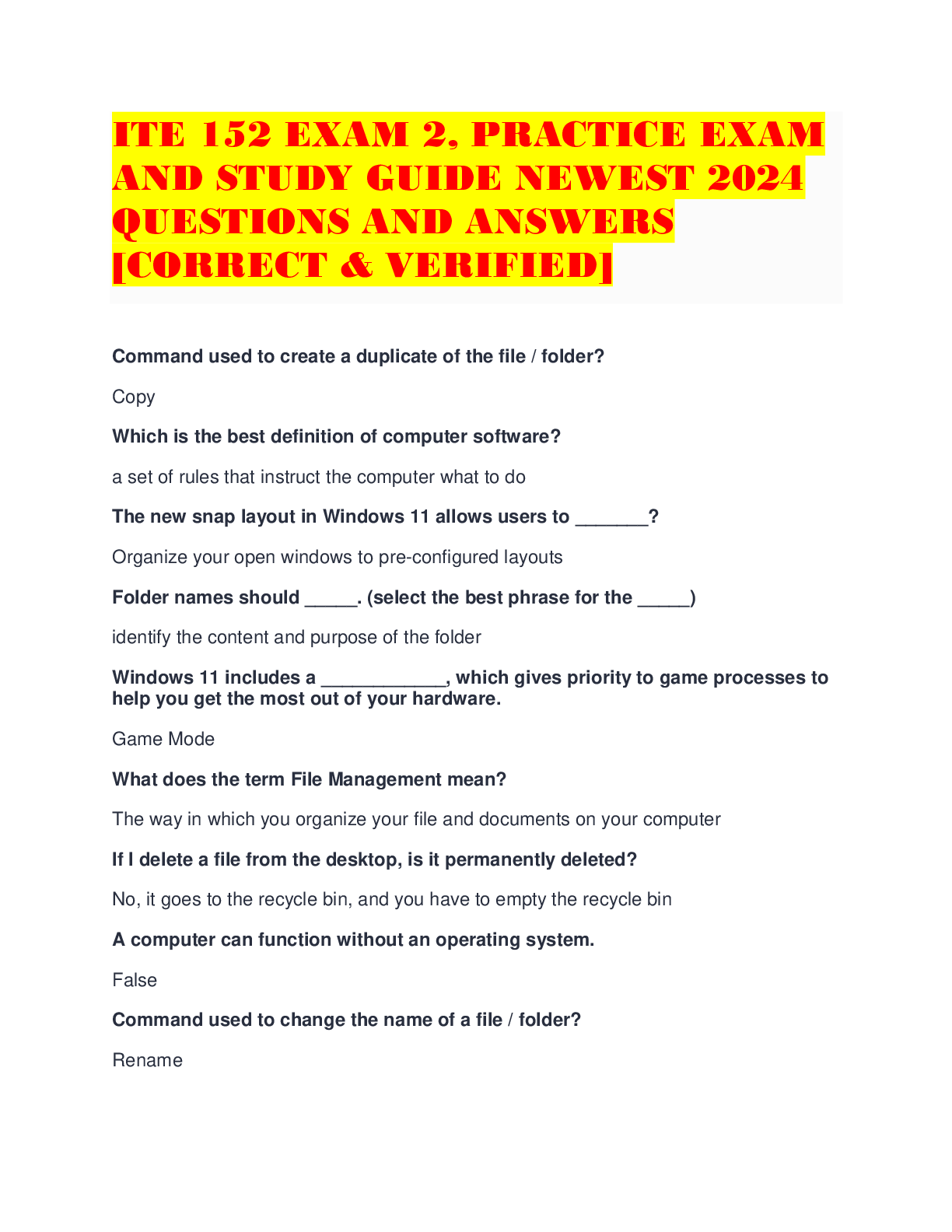Health Care > EXAM > NRNP 6635 MID TERM NOTES AND STUDY GUIDE (All)
NRNP 6635 MID TERM NOTES AND STUDY GUIDE
Document Content and Description Below
NRNP 6635 MID-TERM STUDY GUIDE Week 1: History and Theories of Psychopathology Functions of Brain Regions • Brainstem and the thalamic reticular activating system provide arousal and set up atten... tion • posterior cortex integrates perceptions and generates language • frontal cortex generates programs and executes plans like an orchestra conductor (the highest level) • Cerebrum - Higher cognitive functions such as judgment, imagination, perception, thought and decision-making o cerebral cortex is especially important for personality and intelligence o two symmetrical hemispheres that each play slightly different roles regarding speech, language learning, and vision • Cerebellum - voluntary motor movements, balance, equilibrium, and muscle tone o Damage to the cerebellum can result in loss of motor control, weak muscles, abnormal eye movements, slurred speech, and staggering • Diencephalon - thalamus and the hypothalamus o Hypothalamus – control of appetite, temperature, blood pressure, perspiration, and sexual drive o relay point between subcortical areas of the brain and the cerebral cortex o Autonomic nervous system “fight or flight” o relays information about the auditory, visceral, visual, somatic and gustatory systems o control of immune responses, blood pressure, digestion, and body temperature • Brainstem - main junction between the brain and the rest of the body o brain joins with the spinal cord to send and receive information from every inch of our bodies o breathing, heart rate, digestion, and our body’s natural rhythms o includes the medulla oblongata, pons, and midbrain Pathophysiology neurotransmitter involvement with mental health disorders • Serotonin - o involved in the regulation of various activities (e.g. behavior, mood, and memory, sleep, and appetite, encouragement of socialization) o has some influences on learning, memory, and other cognitive abilities o primary treatment target for many psychiatric and neurological disorders (e.g. major depressive disorder, post-traumatic stress disorder, bulimia nervosa, obsessive-compulsive disorder, anxiety, aggressive behavior, premenstrual dysphoric disorder, panic disorders, social phobia, bipolar disorder, atypical depression, and migraine [Show More]
Last updated: 2 years ago
Preview 1 out of 27 pages

Buy this document to get the full access instantly
Instant Download Access after purchase
Buy NowInstant download
We Accept:

Reviews( 0 )
$18.00
Can't find what you want? Try our AI powered Search
Document information
Connected school, study & course
About the document
Uploaded On
Jul 09, 2022
Number of pages
27
Written in
Additional information
This document has been written for:
Uploaded
Jul 09, 2022
Downloads
0
Views
169












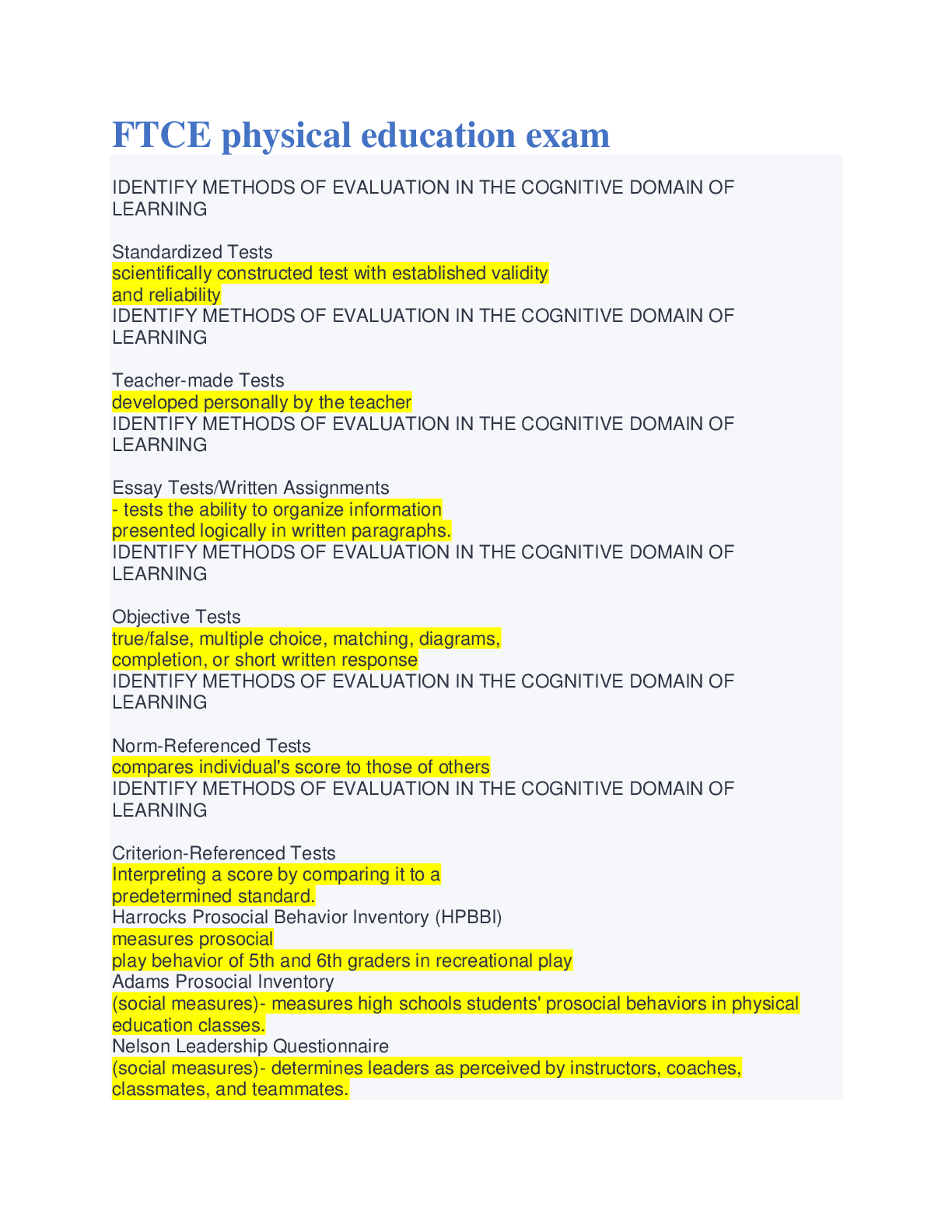
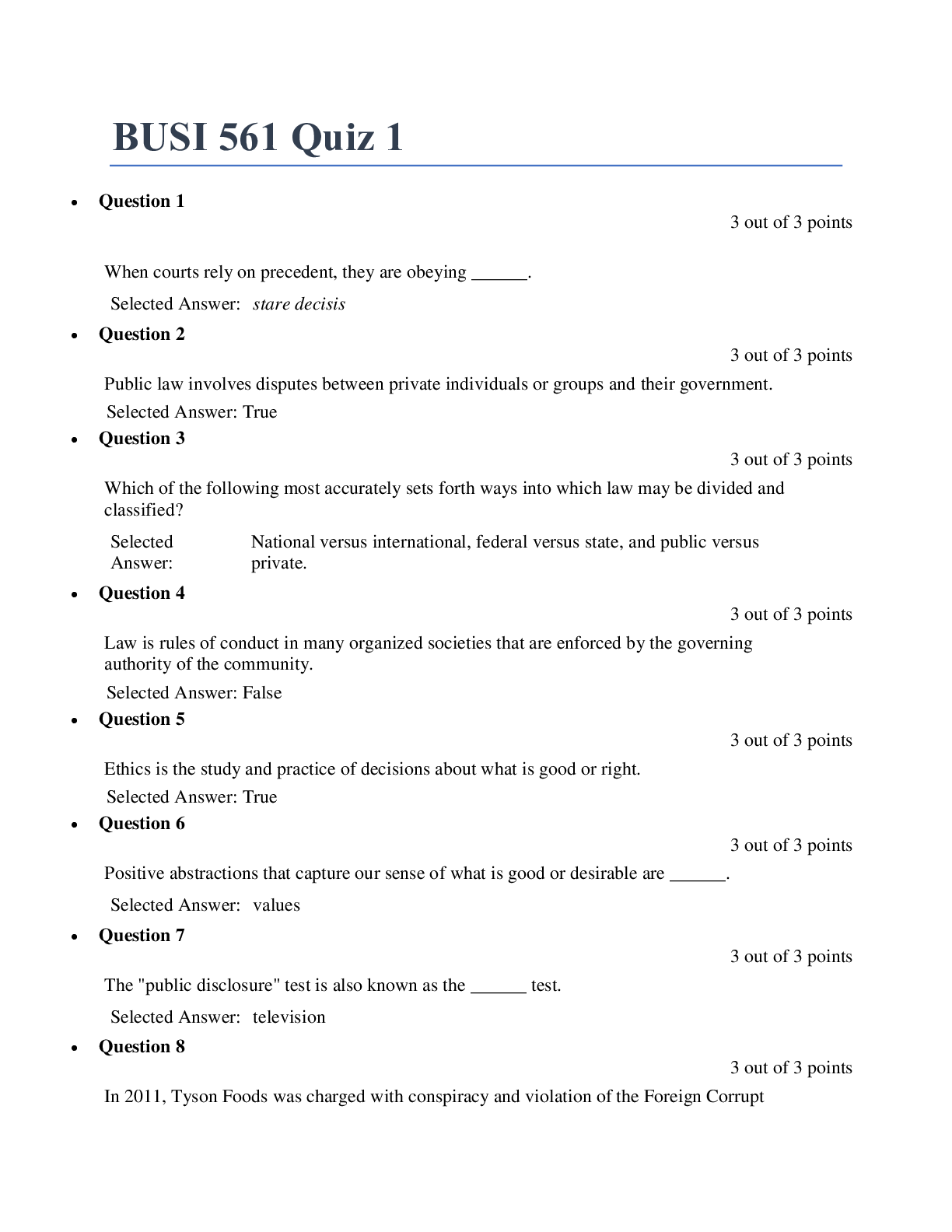
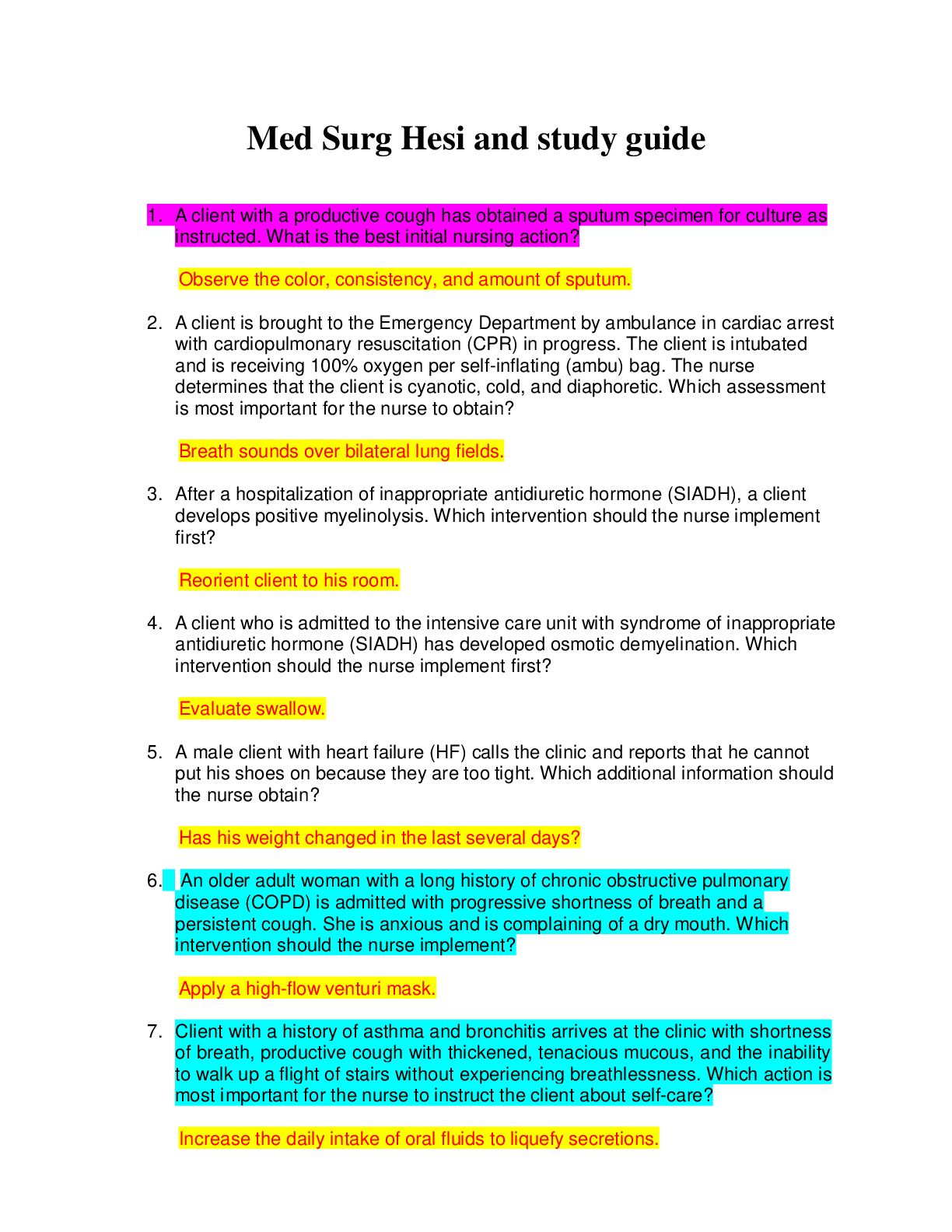



 100 CORRECT RATED A+.png)
